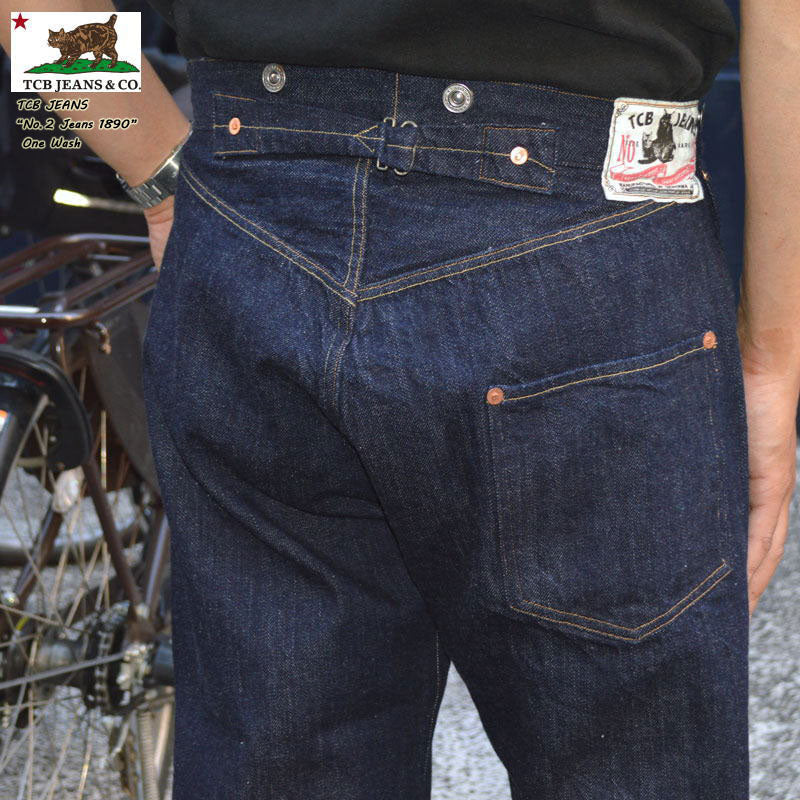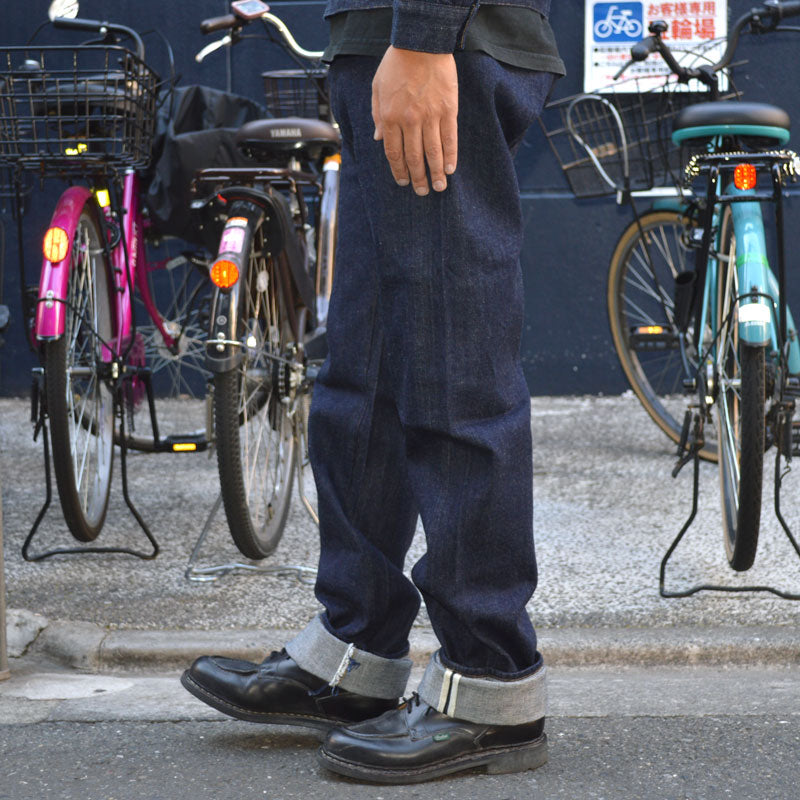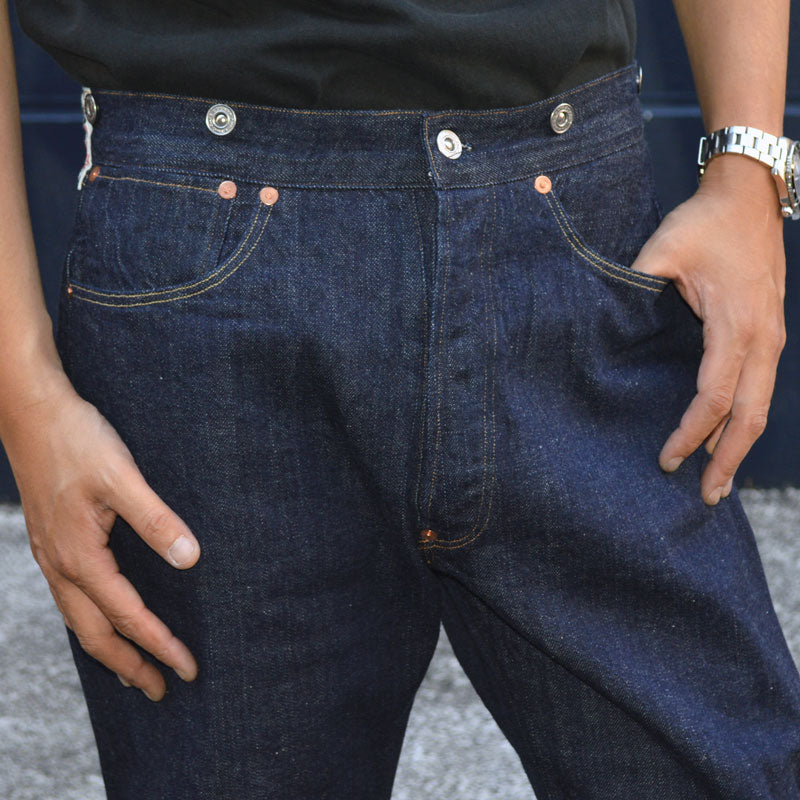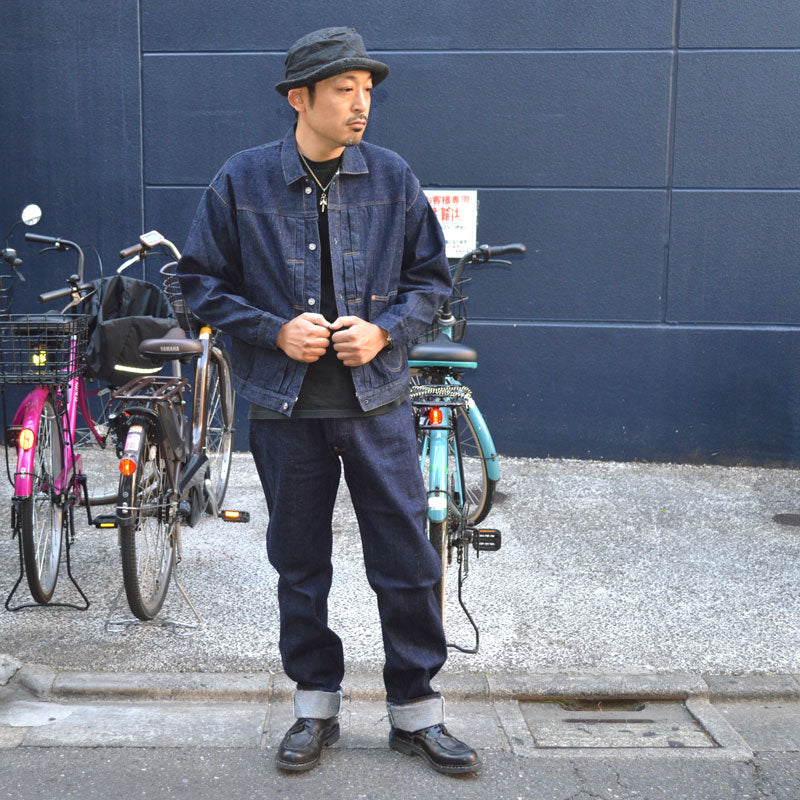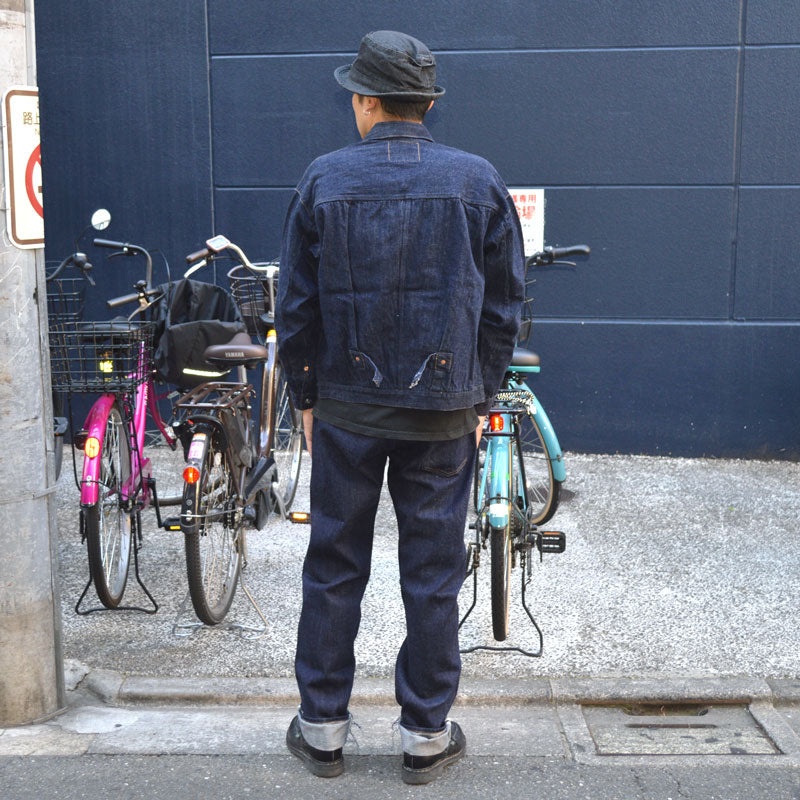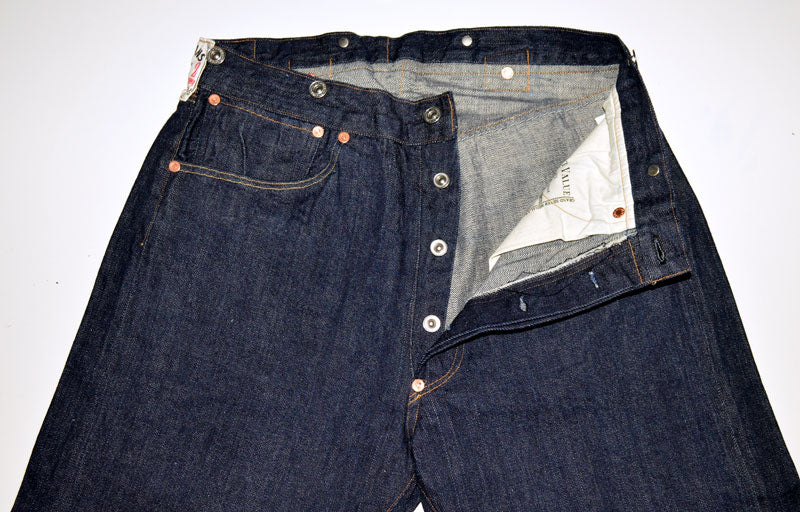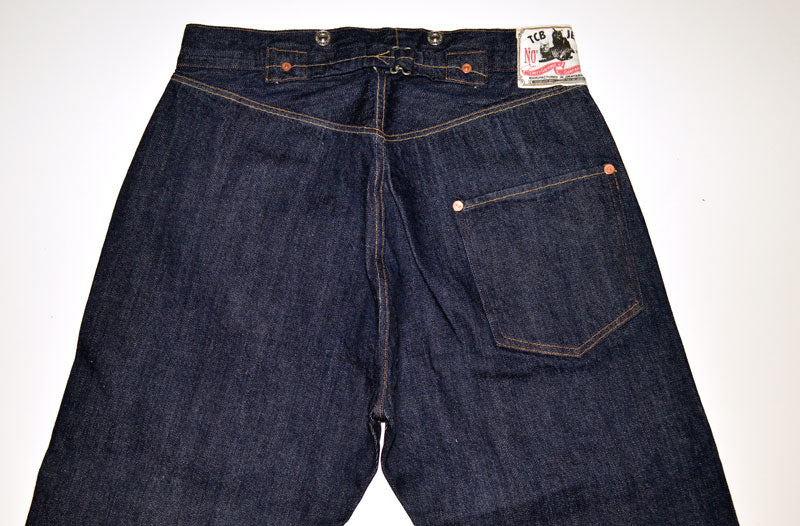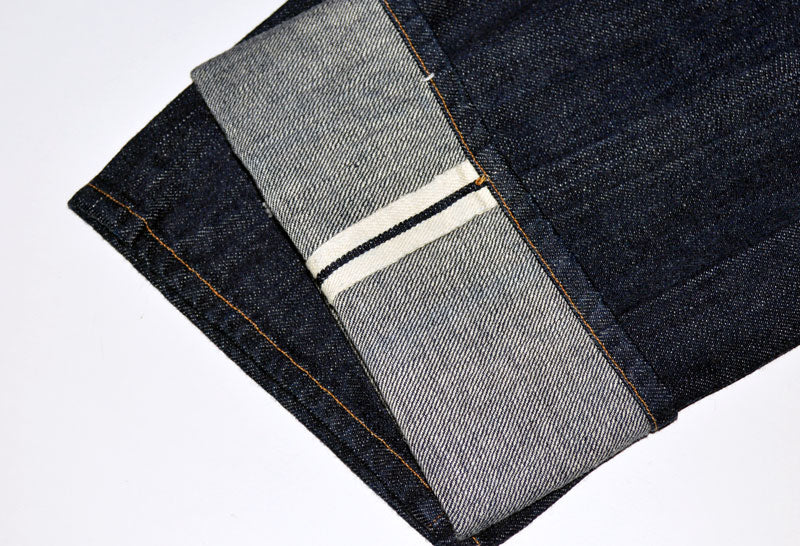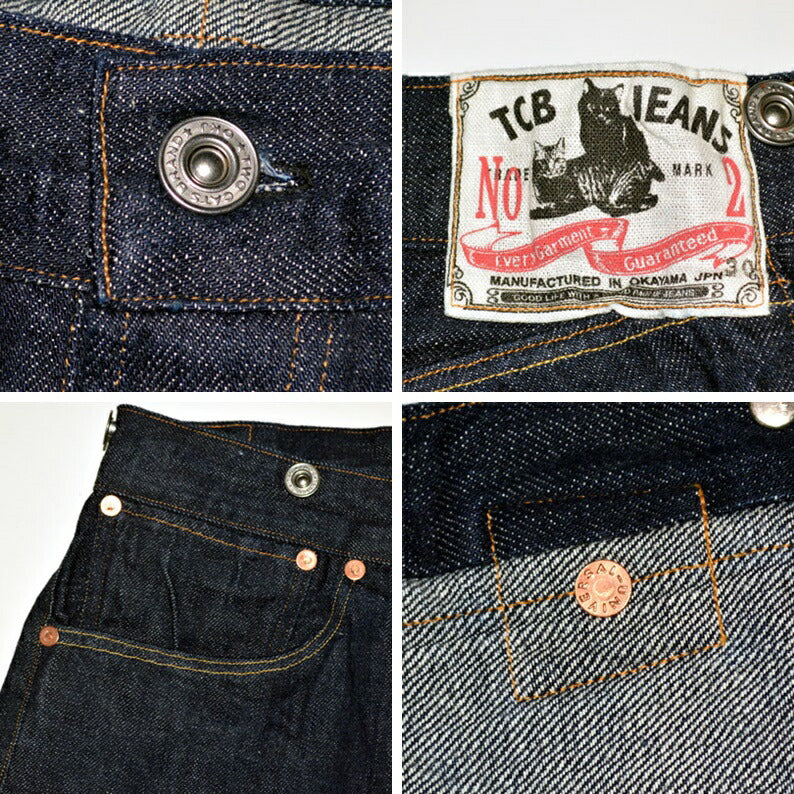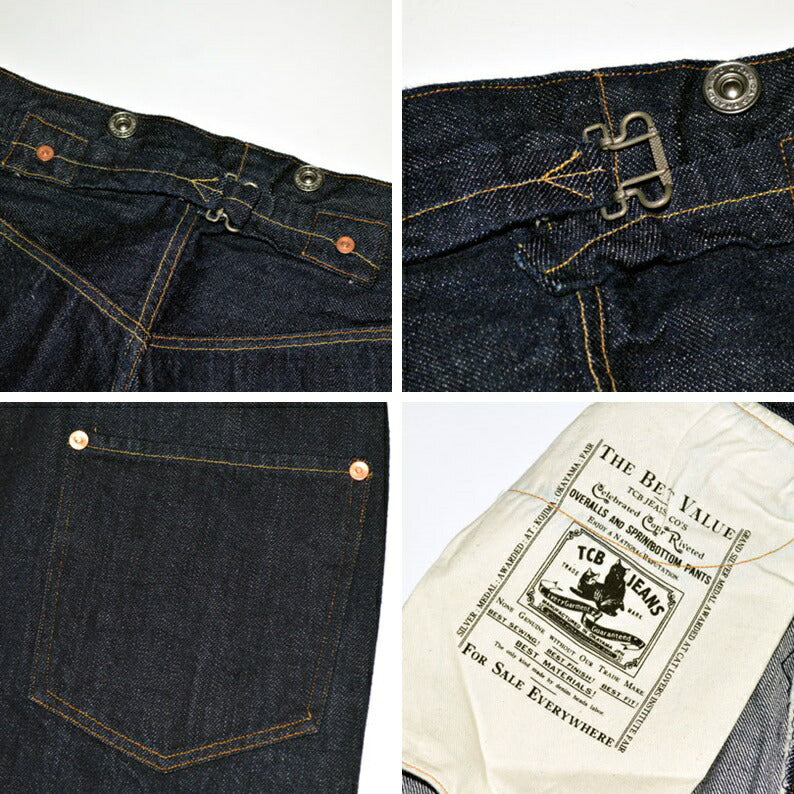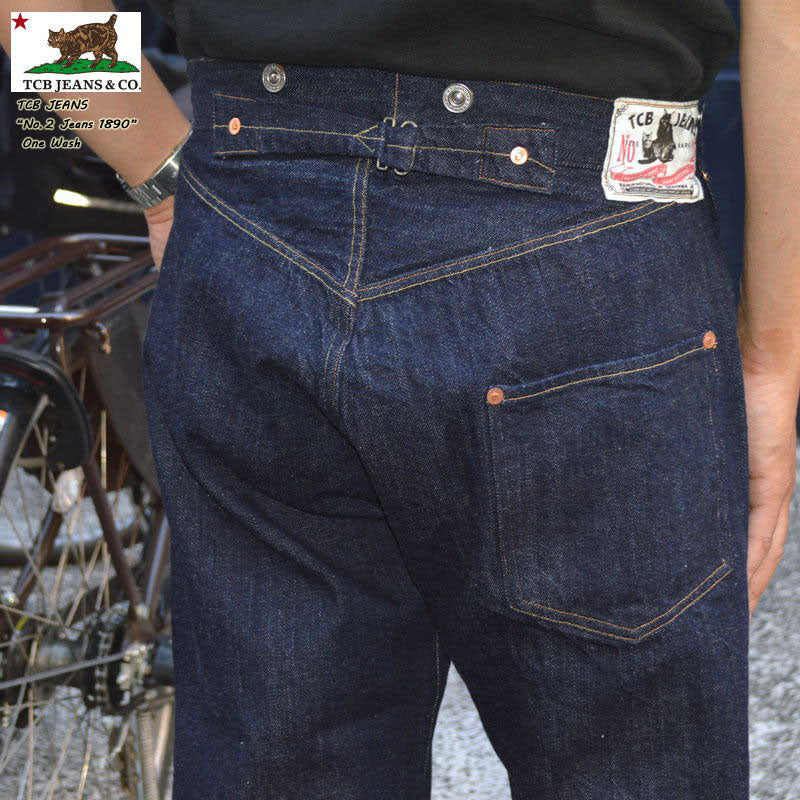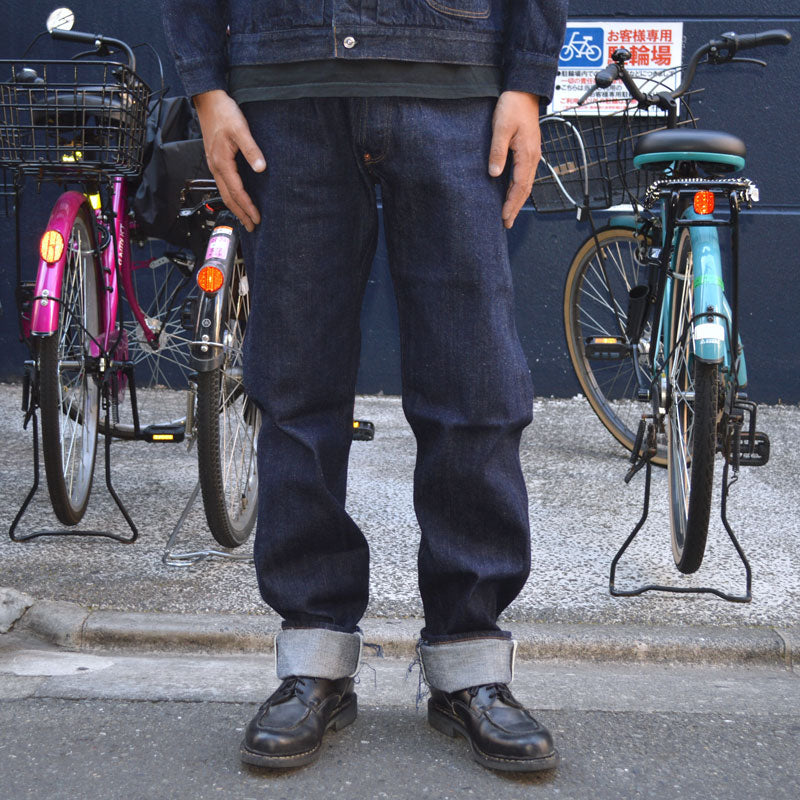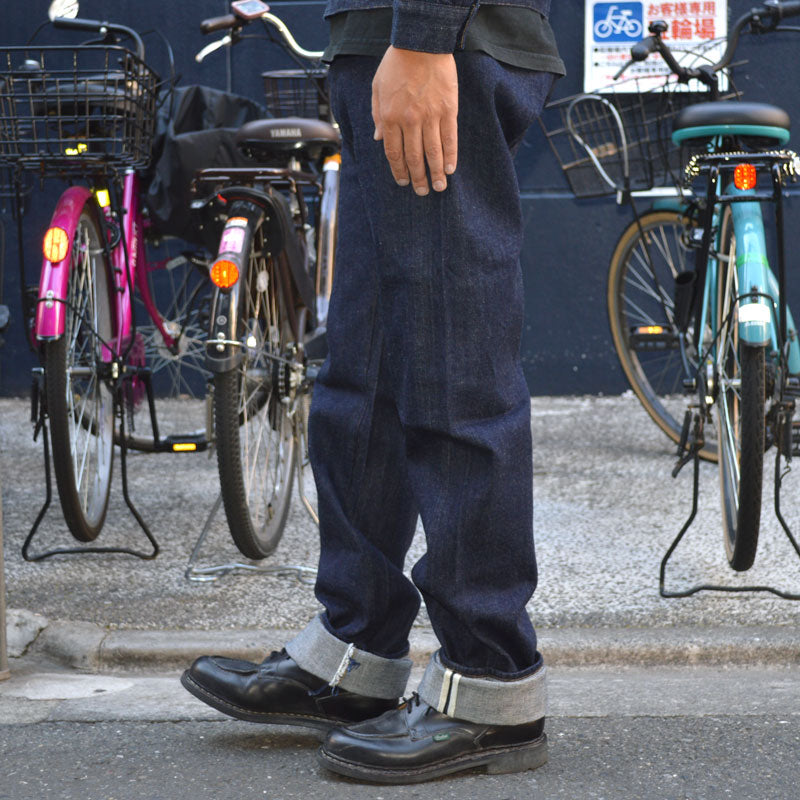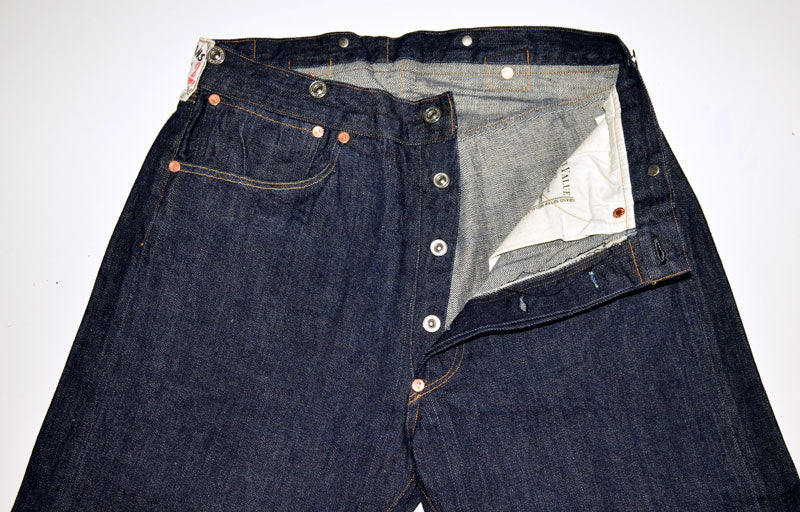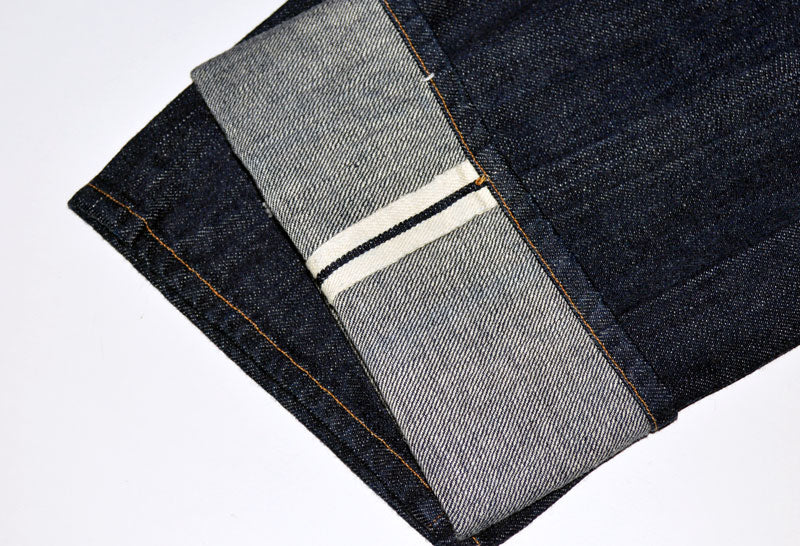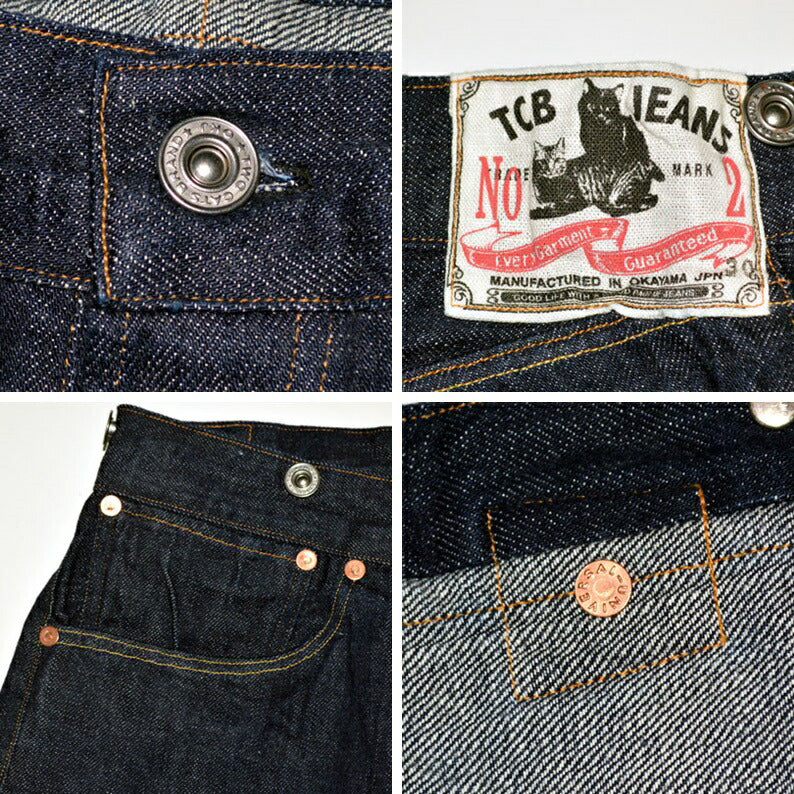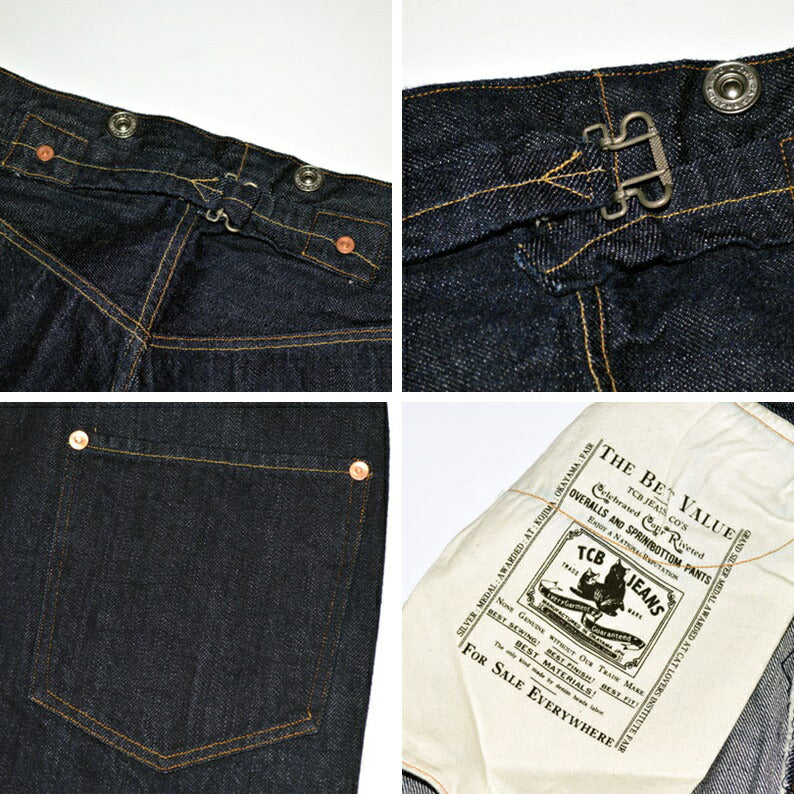TCB jeans "No.2 Jeans 1890" 11.4oz Jeans
TCB jeans "No.2 Jeans 1890" 11.4oz Jeans
[TCB jeans "No.2 Jeans 1890" 11.4oz Jeans]
This is TCB Jeans' new No2 Jeans 1890.
It is made with reference to the 201s of the 1890s, with linen patches and a single pocket.
This time, the fabric is not XX DENIM, which is said to be the highest quality, but No.2 denim.
This denim has a strong irregularity and a sense of vertical fade due to the long slub.
When making XX denim from yarn, No. 7 is generally used for the warp and No. 6 for the weft.
This No.2 denim is basically an uneven yarn of No.7 class, with some parts of the yarn like a thick No.6 and some parts like a thin No.8.
This denim was made in the 1890s.
TCB JEANS made the fabric on the assumption that the cotton quality and yarn shape were a bit rough, since it is No. 2.
"Thick white ear".
I don't know where this vintage fabric is from, because I know that XX DENIM is Amoskeag in 1890s.
But one thing I can say is that it was before synthetic indigo was adopted, so TCB dyed it with real indigo.
And the interesting thing is the twill direction of the ears.
I have seen thick white ears on 20's models, but this fabric has different twill direction of the ears on the left and right sides.
So, one side is right side twill. The other side is left twill.
"Hartshorn Buckle".
This buckle is made in reference to the buckle invented by Mr. Hartshorn in 1855.
It was probably made by bending a wire-like object at that time.
"Sewing and Riveting the Small Crotch"
In the current way of thinking, when sewing the small crotch, the right and left fronts should be sewn so that they overlap each other to prevent the crotch from opening when worn.
However, the overlap of the small crotch in this period was shallow and open.
TCB also sews the overlap in the same way as Vintage.
The position of the crotch rivet is not reinforced at all in Vintage, so the rivet is placed in the stitching of the small crotch.
The rivets are hand-stamped twice to reproduce the original hand-stamping.
"Print on the left front pocket".
I couldn't read the print on the Vintage, but I started to understand what it says by referring to Viktor's book and so on.
The message starts with "THE BEST VALUE" as if it is a low-priced version. I am surprised that there was already a concept of price competition in the 19th century.
"Folded stitch".
Single-needle sewing before the development of chain stitching
Rainbow stitch", a double stitch using two colors. I don't think the two colors were used as a design feature.
The threads that were the same when the garment was new faded at a different pace, or the stitching was done in a random orange color from the beginning.
But the reason is quite different from the rainbow that appears in later 50's archaic stitches.
I can imagine that the 50's archuates were stitched with a 2-needle sewing machine, so they used different color stitches on the left and right sides.
However, the 1890's specification is a 1-needle sewing machine, including the aforementioned fold-down.
It may be that the stitching was done by a different team of sewers on the double and the double side, or that the stitch colors were slightly different because different people sewed on different machines, although the stitching is similar to that of a home made item. The mystery as to why the threads are different only deepens.
"3-piece button".
The first 4-piece tuck button. It is a specification that the button is riveted in front of the button rather than having two legs or S-shaped wire.
Before it is hit, it is a 3 piece of button, middle rivet, and foot.
*The above is mostly excerpted from TCB Jeans' website.
Sampling from the 1890s, you may get the impression that it is quite thick and wild, but it is not extremely thick and shapely.
It is slightly roomy, but the crotch is not extremely deep and the silhouette is not too thick, making it a perfect fat silhouette.
※Notes※
- Metal fittings such as buttons, rivets, zippers, and buckles may injure the body or other objects, so please handle with care.
- Because denim is woven on old-fashioned power looms, there may be unevenness, small scratches, or balls in the fabric. However, these are not defective products but genuine products, so please understand that we cannot accept exchanges or returns.
- Jeans may have creases. These may be creases from storage at our store, or from storage by the manufacturer, but in any case, creases from folding are not defective products but genuine products, so please understand that we cannot accept exchanges or returns.
- Denim may transfer color, so please be careful when washing and what you wear with it.
MODEL DATE
Part Number: No.2 Jeans 1890 ・100% Cotton ・Made in Japan
Silhouette
Inseam [Shallow←1 2 3 4 5→Deep]
Thigh [Thin←1 2 3 4 5→Thick]
Hem width [Thin←1 2 3 4 5→Thick]
DENIM DATE
ounce=11.4oz color fade=vintage
Dyeing [Light←1 2 3→Dark]
Comfort [Soft←1 2 3→Stiff] *Model is 173cm and 64kg.
Model is 173cm, 64kg and wears 31inc.
Size/Waist/Front Inseam/Rear Inseam/Inseam/Thigh/Bottom Width
28inc/72cm/29cm/39,5cm/96cm/27,5cm/18,5cm
29inc/74cm/29cm/40cm/96cm/28cm/19cm
30inc/76cm/29,5cm/40,5cm/96cm/28,5cm/19,5cm
31inc/78cm/29,5cm/41cm/96cm/29cm/20cm
32inc/81cm/30cm/41,5cm/96cm/29,5cm/20,5cm
33inc/83cm/30cm/42cm/96cm/30cm/21cm
34inc/86cm/30,5cm/42,5cm/96cm/30,5cm/21.5cm
36inc/90cm/31cm/43cm/96cm/31cm/22,5cm
38inc/94cm/31,5cm/43,5cm/96cm/32cm/23cm
40inc/98cm/32cm/44cm/96cm/33cm/23,5cm
*The above is the measurement of one product in stock when laid flat.
We lay it on the floor, smooth out any wrinkles, and measure the fabric flat.
The size numbers will vary by a few centimeters depending on the individual product, the measurement method, and the amount of force used.
The size chart is therefore only a guide and may differ from the actual numbers.
*The product photos have been taken with a digital camera.
Please note that the colour of the actual product may differ slightly due to the LCD screen, etc.
*Click here for detailed size measurement methods.
Share
